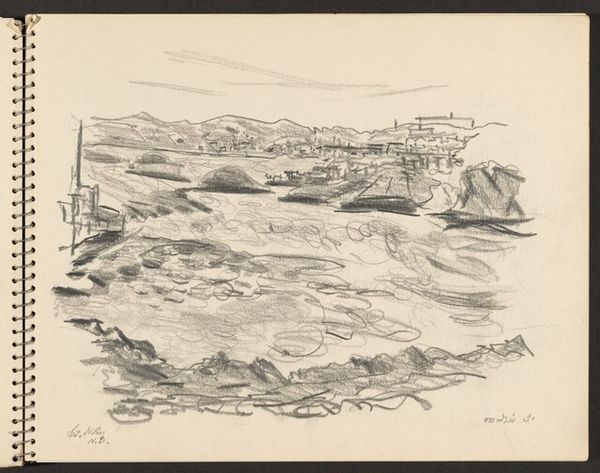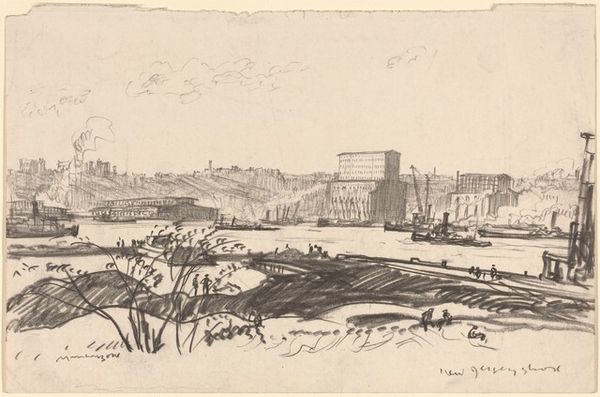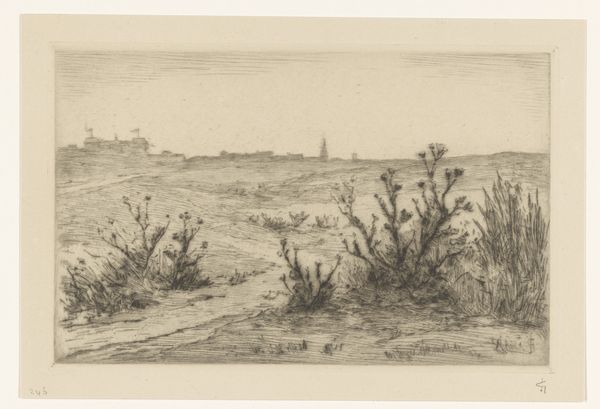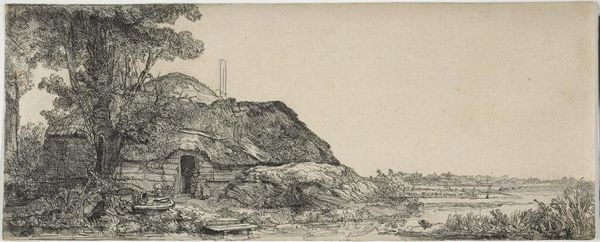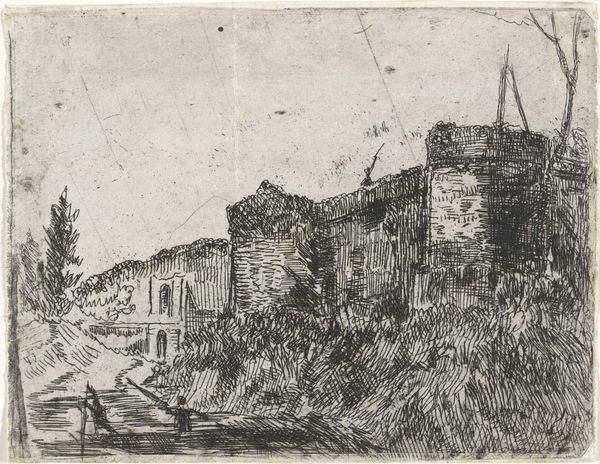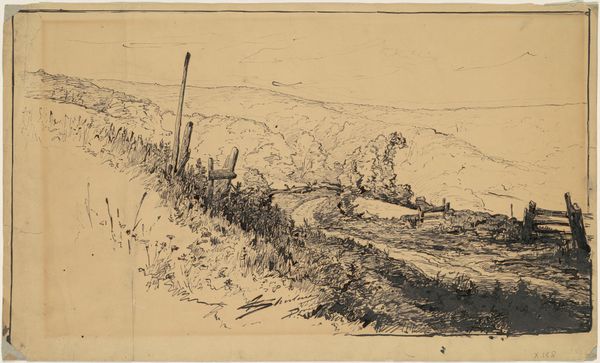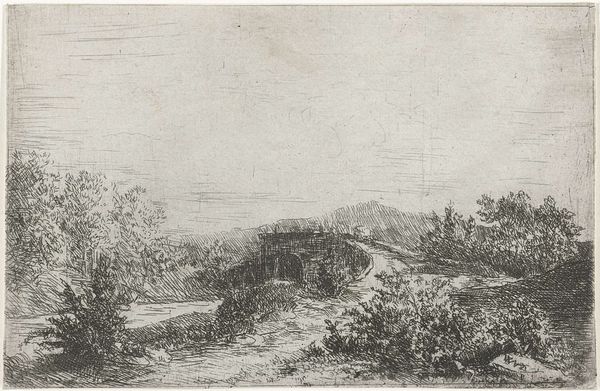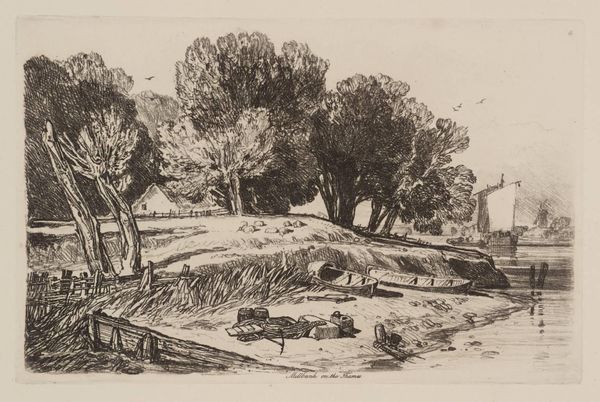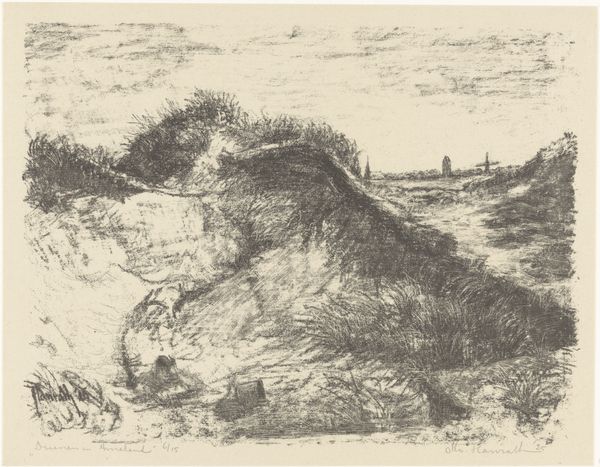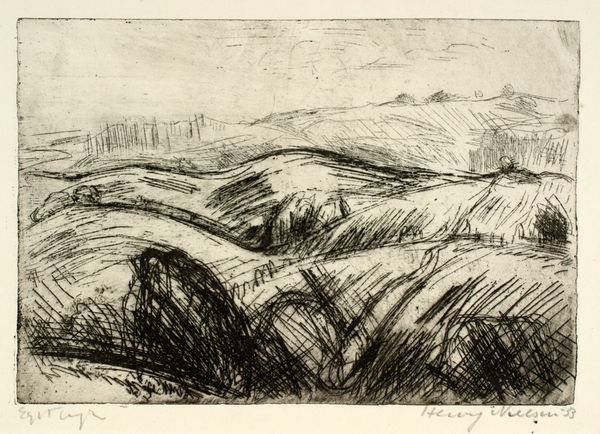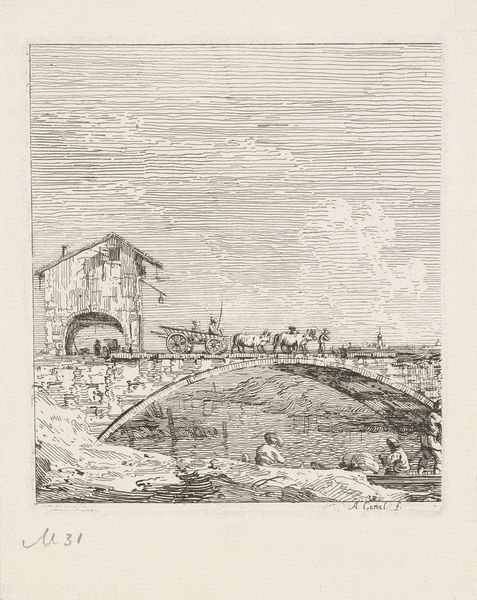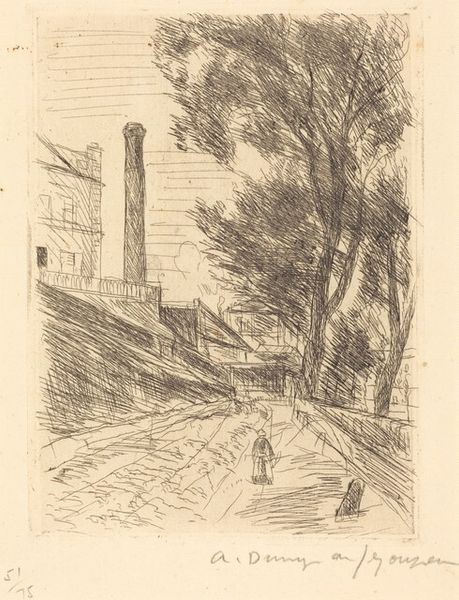
print, etching
# print
#
etching
#
landscape
#
cityscape
#
realism
Dimensions: Image: 135 x 200 mm
Copyright: National Gallery of Art: CC0 1.0
Curator: Look at the energy in this scene. It’s almost dizzying, isn’t it? Editor: It is dynamic, for sure. I'm struck by the stark contrast between the foreground and the delicate buildings in the distance. This is Cadwallader Washburn's "Path to St. Tropez," an etching from 1928. What catches your eye from a materialist perspective? Curator: Well, the medium itself—etching—is so revealing. The lines are deliberate, considered. You see the process so clearly in the final product. The way the artist etches into the metal, the pressure of the press... it all speaks to the physical act of creation, wouldn’t you agree? How would you connect this act of production to other historical and social concerns? Editor: Indeed. The labor and skill embedded in the etched line invite a look at its broader cultural context. Washburn, born in 1866, navigated a rapidly changing art world. Here we see that the perspective mirrors early travelogues illustrating the movement between countries. While travel to St. Tropez had previously been a rare feat, its presentation in accessible print suggests a wider audience able to access images from all over the world, indicative of modernity’s developments. Curator: That is insightful. The distribution is something that would be intriguing to unpack. Is there anything specific about Washburn that interests you? Editor: As someone who became deaf at a young age, one wonders how the loss of that sensory mode changed his perception of space. Perhaps the sharp line contrasts fill a lack thereof. One can only wonder. I do believe it brings an emotional weight to this scene, it pulls you in through shadows but keeps you at a distance because of the composition. It feels suspended. Curator: Absolutely, and seeing the path, this symbol of opportunity, juxtaposed with a dense cluster of undergrowth in the center, it feels charged, and complex. The shadow from these forms obscures access, creating questions of who exactly is permitted access, even if we are only speaking about St. Tropez. Editor: I am inclined to agree, the ability to experience space became more open due to mass transit, as we saw, while barriers to it were being created. Curator: It feels particularly relevant in our contemporary dialogues about belonging. I find it very thought-provoking. Editor: And that tension, perfectly etched, lingers with us, doesn't it? A seemingly simple scene reveals itself to be layered with implications about material production, progress, and exclusion.
Comments
No comments
Be the first to comment and join the conversation on the ultimate creative platform.
